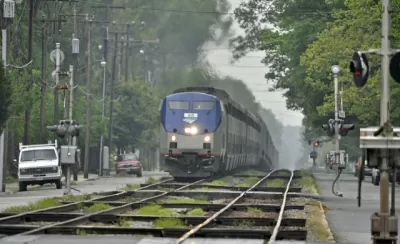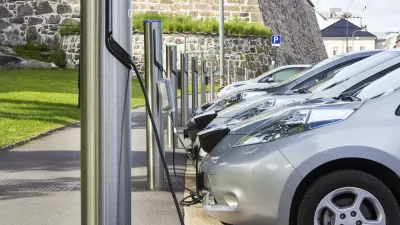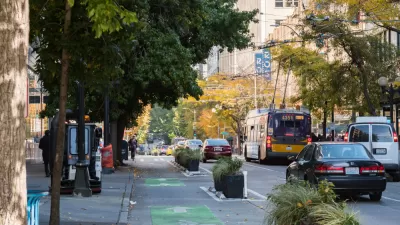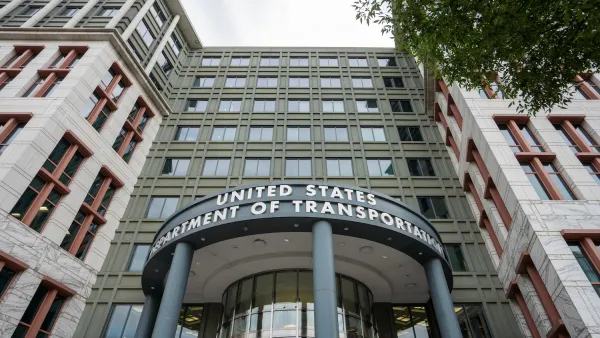The proposed bill keeps road funding almost intact while cutting funding for electrification, rail, and community development.

Despite the "historic" level of funding for transit included in the current infrastructure bill, Kea Wilson writes that the similarly "historic funding for drivers" undercuts any potential progress. According to Wilson, writing before the "Infrastructure Investment and Jobs Act" passed the Senate last week, "many sustainable transportation advocates were troubled by top-line funding ratios that would give transit a smaller percentage share of federal dollars than at any point since the Nixon administration, slash 95 percent of funding for a program that would reconnect BIPOC communities sundered by highways, and threw only crumbs to ending the accelerating roadway safety crisis."
Since the 1980s, "a handshake agreement in Washington has essentially guaranteed that drivers get 80 percent of federal infrastructure funding and transit agencies get 20 percent." Despite hopes that the new bill would tip the scale more towards transit, the current agreement does the opposite, "landing at roughly 82/18 — a slap in the face to advocates who hoped to see drivers split the pie 50/50, at the least." According to Renae Reynolds, executive director of the Tri-State Transportation Campaign, "it’s a suicide mission that prioritizes cars and highways over more equitable and sustainable forms of transportation."
Wilson writes that "[t[he transit category lost about 54 percent of proposed stimulus funding as it went through the partisan sausage-grinder; the 'roads' category, by contrast, lost about 8 percent." Meanwhile, funding for electrification programs has been slashed by 90 percent from the original proposal and "new roadway safety spending could easily be undercut by the continuation of bad roadway policy."
FULL STORY: Infrastructure Deal ‘Worst Ratio for Transit Funding Since Nixon’

Planetizen Federal Action Tracker
A weekly monitor of how Trump’s orders and actions are impacting planners and planning in America.

Congressman Proposes Bill to Rename DC Metro “Trump Train”
The Make Autorail Great Again Act would withhold federal funding to the system until the Washington Metropolitan Area Transit Authority (WMATA), rebrands as the Washington Metropolitan Authority for Greater Access (WMAGA).

DARTSpace Platform Streamlines Dallas TOD Application Process
The Dallas transit agency hopes a shorter permitting timeline will boost transit-oriented development around rail stations.

Renters Now Outnumber Homeowners in Over 200 US Suburbs
High housing costs in city centers and the new-found flexibility offered by remote work are pushing more renters to suburban areas.

The Tiny, Adorable $7,000 Car Turning Japan Onto EVs
The single seat Mibot charges from a regular plug as quickly as an iPad, and is about half the price of an average EV.

Supreme Court Ruling in Pipeline Case Guts Federal Environmental Law
The decision limits the scope of a federal law that mandates extensive environmental impact reviews of energy, infrastructure, and transportation projects.
Urban Design for Planners 1: Software Tools
This six-course series explores essential urban design concepts using open source software and equips planners with the tools they need to participate fully in the urban design process.
Planning for Universal Design
Learn the tools for implementing Universal Design in planning regulations.
Roanoke Valley-Alleghany Regional Commission
City of Mt Shasta
City of Camden Redevelopment Agency
City of Astoria
Transportation Research & Education Center (TREC) at Portland State University
US High Speed Rail Association
City of Camden Redevelopment Agency
Municipality of Princeton (NJ)





























